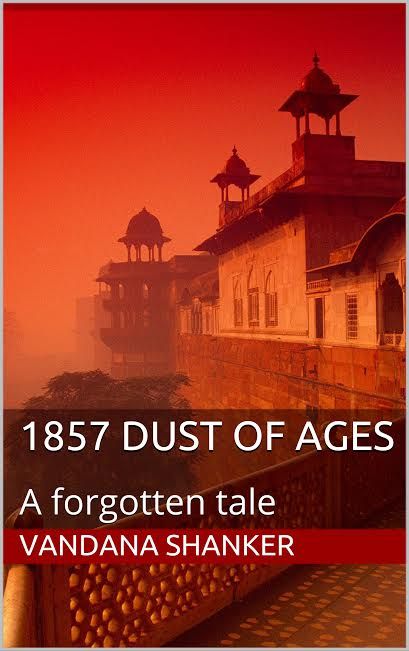 |
| Author Vandana Shanker |
Your take on relevance of history in the modern day. Why is it essential for people to know and understand this subject as well?
‘Time is a strange storyteller. It writes, erases and then rewrites. Thing change, places and people become unrecognizable. But stories are repeated endlessly….’ (1857 Dust of Ages: A Forgotten Tale).
‘Time is a strange storyteller. It writes, erases and then rewrites. Thing change, places and people become unrecognizable. But stories are repeated endlessly….’ (1857 Dust of Ages: A Forgotten Tale).
In 1857 Dust of Ages, one of the themes is the way history ties the past and the present. For Shiv, it is important to learn about the history of his family, his town. That gives him a sense of who he is. To remain unware of history is to be like a lose leaf that does not know the tree it came from.
For me, history is not about what was, but what is. I don’t think of it as a subject out there, that has to be written. In a sense it is relevant to our everyday life, for it shapes the world around us. It shapes us, our identities, our conflicts and our response to those conflicts.
It is not necessary that one always agrees with what history tells us. I grew up reading a lot of conflicting accounts of 1857. As a Delhite from the walled city, one of the greatest Centre of the 1857 uprising, these accounts fascinated me. From Amar Chitra Kathas, I learnt of the valiant heroes of the uprising, the brutality of the British, the dreams of freedom. Then I read English novels about the mutiny. These talked about the barbarity of the mutineers, the blood shed of the innocents, the hardships and dangers that the British survivors recalled. Then there were historical accounts always trying to work out what led to such a massive uprising. As I read more and more, I realized that there is no one version of history. There are numerous stories and I wanted to tell my own.
One of my readers told me that 1857 Dust of Ages led him to try and trace his family tree, but it was difficult to go beyond his great grandfather. I asked him to try. We all should. Who knows what surprises are hidden in each of our histories.
About the Author
Delhi-born Vandana Shanker is the author of the series 1857 Dust of Ages, a historical fiction set in the year of the great uprising in India. A PhD from IIT Delhi, Vandana is passionate about history, storytelling and art. Apart from writing, she teaches literature and creative writing in Malaysia. She has also taught in Universities in India and Vietnam. She currently lives in Kuala Lumpur with her family and wants to travel the world.

